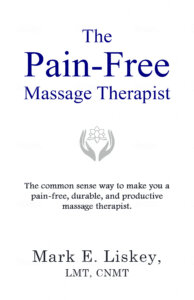As you’re building your massage practice, you don’t want to burn bridges—with clients, referral sources and other health care professionals. But there may be a time when acting in your client’s best interest means that you must speak up.
Here’s how I recently got my point across to my client without throwing the doctor under the bus.
Lucy is a Good Runner
Lucy was training for a marathon, and her running coach, Ian, sent her to me. Lucy had been diagnosed with plantar fasciitis by her podiatrist who specialized in running injuries. An X-ray didn’t reveal a bone issue.
Before seeing me, the podiatrist had given Lucy a cortisone shot and treated with her shock wave therapy (sonic waves directed at a soft tissue area). Lucy was also seeing a chiropractor.
Ian’s Concern
Ian had seen a lot of injuries in his decades of training runners and was concerned about how long it was taking Lucy to heal. In addition, she was experiencing a new pain across the top of her foot. Nevertheless, the podiatrist had given the Lucy the green light to continue training for her marathon.
Even with the green light to run, Ian had modified Lucy’s training to pool work and the stationary bike. He was also concerned that Lucy was being over-treated with cortisone, shock wave therapy and adjustments.
I Work on Lucy
When I started working on Lucy’s foot, I discovered that she had a high pain tolerance. So we used an adjusted pain scale to make sure that I wasn’t applying too much pressure. After the massage, she said her foot felt better. I told her that if it were my foot and it didn’t improve in the next couple of days, I would consider getting more diagnostics done.
The next day she ran 6 miles. It was the first time she ran in a week or so.
She reported to me that her plantar fasciitis felt a lot better during the run, but the pain across her foot was still there.
It Gets Worse
Over the next 2 weeks, Lucy continued to run and started seeing a chiropractor who began treating her with more shock wave therapy. Then on one training day, Ian noticed something different about Lucy’s foot. It was swollen across the top of her foot. With Lucy’s permission, he sent me a pic of her foot.
Battle Lines are Drawn
Well, it looked like a no brainer to me—time to get another X-ray, then an MRI. But WAIT, when Lucy asked the podiatrist and chiropractor about the swelling, they both said that they didn’t think she had a fracture and didn’t need an MRI.
The battle lines were drawn. To get my point across I needed to make sure Lucy understood that her condition had gotten worse under the current treatment plan even though she may not have noticed because of her high pain tolerance and that an MRI was more definitive than an educated guess.
Here’s what I did to get my opinion across without throwing anybody under the bus.
- Provide information that supported my point.
Since Ian was the one who sent me the pic, I texted him links to Youtube videos that talked about metatarsal fractures. In one video, the podiatrist explained how easily a metatarsal fracture can be misdiagnosed. In another one, the podiatrist showed a manual (and potentially painful) test for a metatarsal fracture—something I was positive that no one had done with Lucy.
- Stay in touch.
After I sent the text to Ian I was going to give the situation 24 hours before I followed up. But Ian had shared the videos with Lucy and shortly after I had texted Ian, Lucy texted me. She had decided to go for further testing.
Then she texted me when the X-ray came back negative. I texted back: “Great! I hope that the podiatrist and chiropractor are right.”
When the MRI came back, it turned out that the chiropractor and podiatrist were right: Lucy didn’t have a fractured metatarsal.
She had fractures in THREE metatarsals! And there was another metatarsal that had a recently healed fracture.
- Shut up.
Yes, I wanted to gloat. But I think gloating is connected to the gambler’s memory where you remember your wins, but not your losses. And if I really thought about it, I had gotten plenty wrong.
The most important thing was that the guessing was over. Lucy now knew what was wrong with her foot and she could get started with an appropriate treatment.
Getting Along without Going Along
For the most part, the Getting Along without Going Along formula has worked for me when it comes to letting the client know my opinion without jeopardizing the delicate balance between the client, myself, the coach and other health professionals.
It has three parts: 1. support your point in a professional way, 2. stay in touch with the client, and 3. shut up no matter the outcome.
For other ways that I help my clients out, check out I Saved My Client $5000.
Need More Help?
Sign up for my email group and get my latest info. It’s free and you can unsubscribe whenever you want:-)






